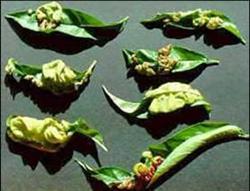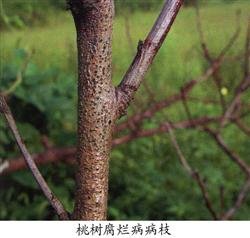Prevention and treatment of phosphorus deficiency symptoms in peach trees

1. The effect of phosphorus on the growth and development of peach trees phosphorus has two effects on the growth and development of peach trees. On the one hand, phosphorus can enhance tree potential, maintain healthy growth, promote flower formation, early fruiting, promote fruit and seed ripening, increase sugar content and improve fruit quality. On the other hand, it can improve the adaptability of peach trees to the external environment, enhance the root absorption function, promote root growth, and improve the drought resistance, cold resistance and disease resistance of fruit trees. 2. Symptoms of phosphorus deficiency Peach trees show slow plant growth, thin and erect branches, thin and brittle leaves, delayed fruit ripening, small fruit, not bright coloring, low sugar content and poor fruit quality. The occurrence time was from July to August, and it first appeared on the leaves in the middle of the new shoot, and gradually developed to the upper part. The leaves become small and slender, and the leaves are dark green or gray-green, without luster. The veins of the petiole or the back of the leaf are reddish brown or purplish red, and in severe cases, the whole leaf is purple red. After September, the leaves withered and fell off one after another, and the quality of flower buds was affected by insufficient nutrition accumulation. The specific performance is that the flower bud is thin, the time of flowering and leaf expansion in the second year is delayed, and the fruit setting rate is low. Third, occurrence conditions 1. In alkaline or calcareous soil, phosphorus is easily fixed and can not be directly absorbed by fruit trees. 2. Orchards with partial application of nitrogen fertilizer and too little phosphorus fertilizer. 3. In the soil where less organic fertilizer has been used by unmature tillage for many years. 4. Prevention and control methods 1. After fruit harvest in autumn, on the basis of applying organic fertilizer, inorganic fertilizer or phosphorus compound fertilizer is mainly applied. When applying phosphate fertilizer, pay attention to the proportion of nitrogen fertilizer and potassium fertilizer, and apply formula fertilization. 2. Foliar spraying phosphate fertilizer during the growth period, such as 0.2% Mel 0.3%, potassium dihydrogen phosphate aqueous solution.
- Prev

Opinions on Prevention and Control of Diseases and insect pests in Peach trees in early Spring
Peach leaf shrinking disease mainly harms leaves, but also young branches and young fruits. The disease usually occurs from April to May and occurs only once a year. When the fruit occurs, it turns red, the disease part is swollen, the villi fall off, and the surface is smooth. Varieties with high yield, high quality and disease resistance were selected for agricultural control. Enter the fruit period of the peach orchard, do a good job of soil and fertilizer.
- Next

Efficient Management of Peach trees to promote High yield
Peach tree rot is also known as dry blight. After the peach tree is killed, the branches die and ulcer spots are formed in the big branches and trunks. If not treated in time, the whole plant will die soon. The main causes of the disease are: freezing injury and extensive management; improper fertilization and more autumn rain years, the dormancy of peach trees is delayed, which reduces the cold resistance of peach trees. With.
Related
- Moge, come on! The staff of the peasant association in the producing area of cantaloupe were frightened when the crowd gathered.
- Causes and Solutions of low Fruit setting rate of Apple
- Symptoms and control measures of passion fruit virus disease
- Fruit growing lesson: how do apple orchards keep high yields?
- Can you build orchards in the mountains? What are the pros and cons?
- How to manage the coloring period of Crisson grape?
- This paper introduces the processing technology of two kinds of fig products.
- How much is a month for retired teachers in rural areas by 2020?
- How can strawberry planting increase sugar content? We should pay attention to management in many aspects.
- What are the cultivation techniques on how to improve the yield of golden fruit?

